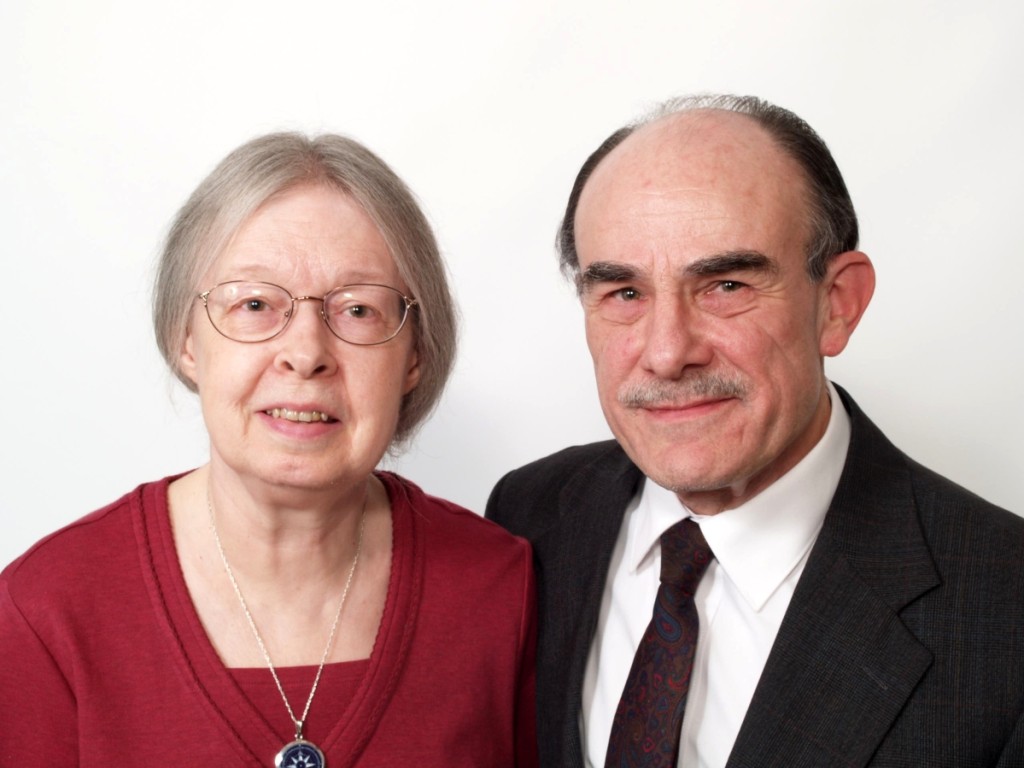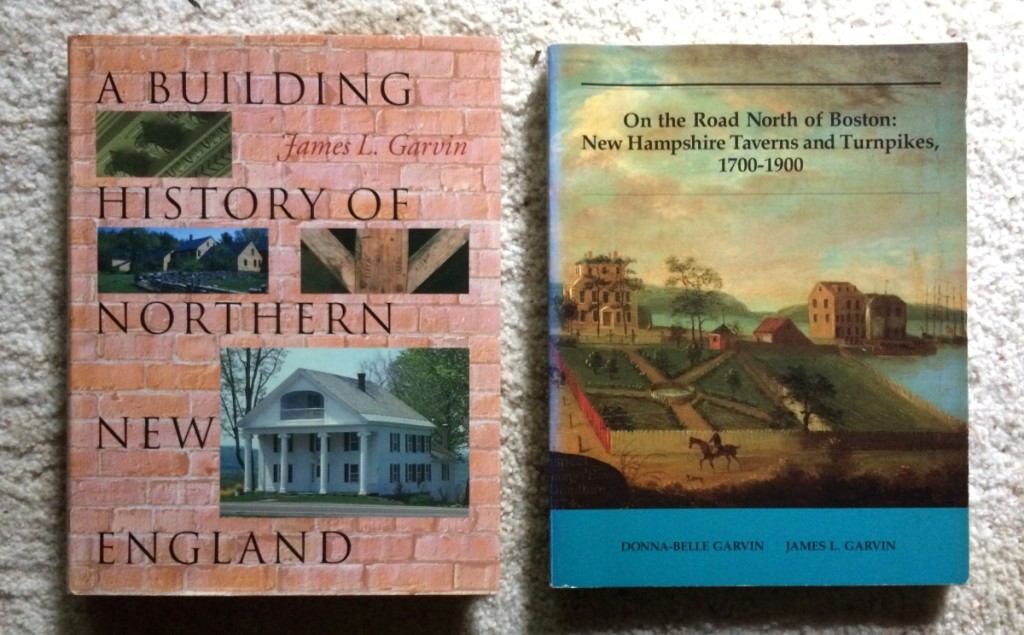
Donna-Belle and Jim Garvin have recently retired; she from more than 40 years at the New Hampshire Historical Society, and he from a 45-year career that included the positions of curator at Strawbery Banke, the Portsmouth Athenaeum, the New Hampshire Historical Society and 24 years as New Hampshire’s architectural historian.
She continues at the NHHS as a volunteer, while he continues as adjunct faculty at Plymouth State University and as a consultant on historical preservation and architectural history. Between them, they authored or co-authored more than 30 books, exhibition catalogs and articles, including Plain and Elegant, Rich and Common: Documented New Hampshire Furniture, Historic Portsmouth: Early Photographs from the Collections of Strawbery Banke, On The Road North of Boston: New Hampshire Taverns and Turnpikes, 1700-1900 and The Building History of Northern New England, plus others on White Mountains art and artists, New Hampshire tool makers, brickmaking, silversmiths, silhouettists, cabinetmakers, family records, coverlet weavers, gravestone carvers, historical buildings and more. The theme that runs throughout? New Hampshire.
The awards the couple have received are too numerous to list, but include prestigious awards, such as the 2011 Granite State Award, presented by the president of the University System of New Hampshire for “their dedication to the preservation and interpretation of New Hampshire history,” the William L. Dunfey Award For Excellence in the Humanities, presented by the New Hampshire Humanities Council, an award from the Society of Architectural Historians and a commendation from John H. Lynch, former governor of New Hampshire. Just listing publications or awards, however, would miss discussing who these people are and how they have spent the last 40-plus years of their lives. The presenter of one award called them the “Power Couple of History.” Another said of Jim, and it applies to Donna-Belle as well, “I don’t think it’s an exaggeration to say that Jim Garvin spends most of his waking life engaged in the humanities – teaching, inspiring, advising, learning.” Donna-Belle introduced a short illustrated presentation at the 50th reunion of her class at Wellesley with this description: “Uncovering the lives and accomplishments of otherwise long-forgotten people through the arts, crafts and other artifacts they produced and left behind has been my passion, made possible through my daily museum and historical society work.”
Haven’t you been together for your entire working careers?
Donna-Belle, known to all as D-B, said, “Yes. We met in 1967 when we both interviewed for the University of Delaware’s Winterthur Fellowship in Early American Culture. We were among the eight students accepted, received our master’s degrees in 1969, married and moved to Portsmouth where Jim had been on a leave of absence from Strawbery Banke. He became its first curator and spent about 11 years there. I volunteered there as a librarian and worked with Jim on the Historic Portsmouth book, which utilized the Strawbery Banke photograph collection. Since then, our employment history has been similar and we’ve always helped each other with whichever research project was current at the time. We both always have mysteries we’re trying to solve – sometimes it can take years to find answers.
How did your interests develop?
My interest actually started while I was a Girl Scout, and my parents always took my brother and me to historic houses. One of the first papers I remember writing was on Jacobean furniture while I was in junior high. Jim began in architectural engineering and got an associate’s degree from Wentworth. He decided he was more interested in a career working with old buildings. He became just the second employee at Strawbery Banke and he started each workday going through some of the old buildings in that neighborhood, which were scheduled for demolition, to salvage whatever materials he could. He knew that he would need additional degrees so he went back and got his BA in the history of art from UNH, then the MA from Delaware and a PhD from BU in American and New England Studies. When the state was staffing the Division of Historical Resources, he was offered the newly created position of state architectural historian and couldn’t pass it up. His studies of old houses eventually resulted in the publication of A Building History of Northern New England, which was written to help those interested to understand old houses, how they were built and what materials were used.
What are you working on now?
Jim is completing work on an architectural guide book, Buildings of New Hampshire, which will be published as part of the Society of Architectural Historians’ “Buildings of the United States” series. He’s also working on a book about New Hampshire’s stone, concrete and steel bridges. That’s a lifelong passion of his, but there never seems to be enough time for him to work on it. I’m working on the historical society’s online Timeline of New Hampshire History, a comprehensive online tool for anyone interested in the people and events of the state’s history. And I’ve more research projects than I can count, and I’m adding to the files on these constantly.
– Rick Russack





